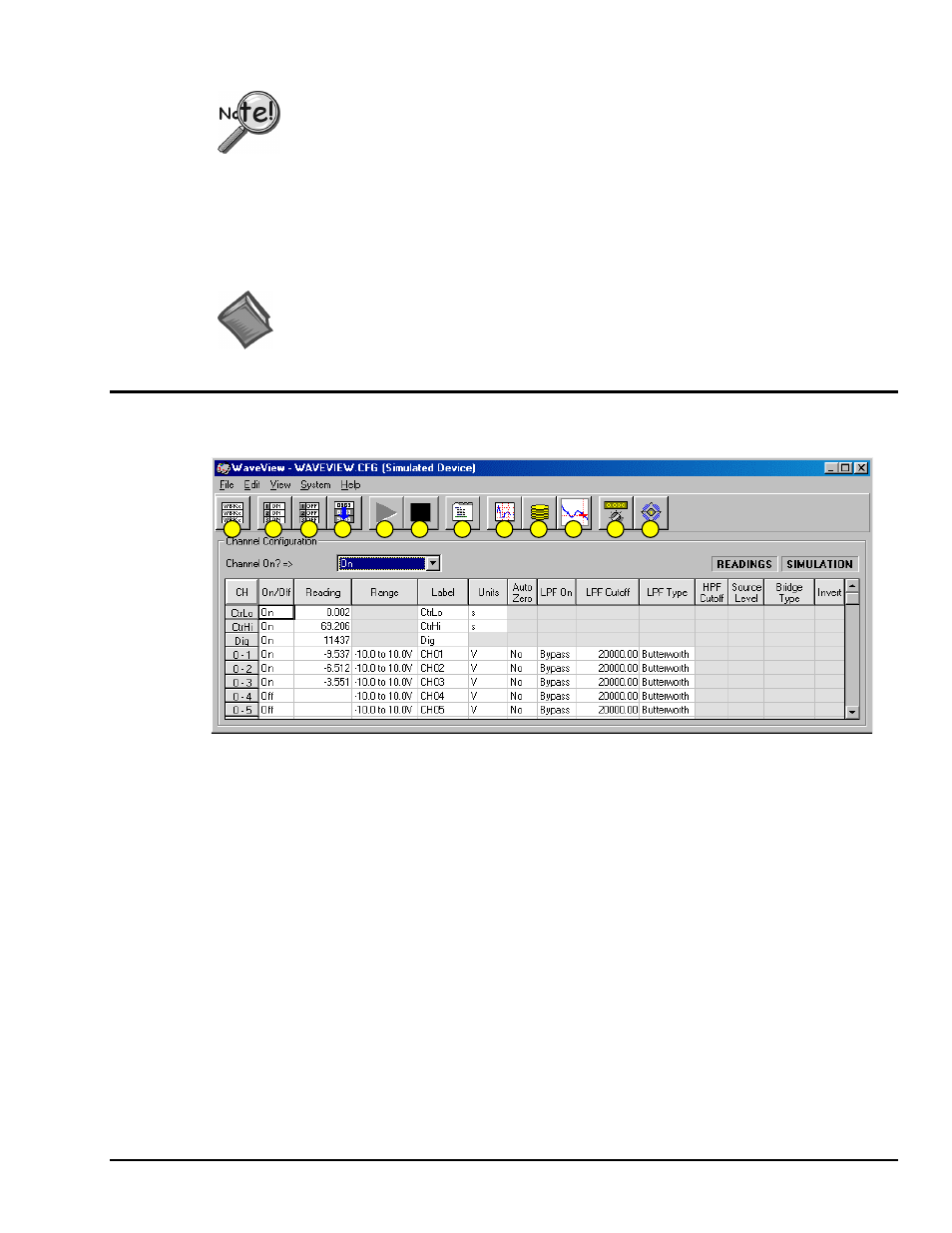Waveview configuration main window, Tion…… 6-7, In window…… 6-7 – Measurement Computing WavePort rev.3.0 User Manual
Page 59: Enu items & buttons…… 6-7, Store data, Option, Menu items & buttons

WavePort User’s Manual
09-29-00
WaveView 6-7
Store Data
[and View File Data],
Option
Data to be viewed with the post acquisition data viewer must be in the appropriate
binary format. From WaveView, you can select the format by navigating as follows:
WaveView Main Window
⇒
⇒
⇒
⇒ File ⇒
⇒
⇒
⇒ Data Conversion Preferences and check the
appropriate box.
Save collected data to disk by clicking on the Save button ("floppy disk" or left-most button) of the
WaveView Scope window, and then giving the file a name. Note that you can analyze the saved data with
DIAdem, a post-acquisition data-viewer program.
To open DIAdem, return to the WaveView Configuration main window then click on the View File Data
toolbar button (button 10 in the following figure).
Reference Note:
For detailed information regarding DIAdem, refer to Chapter 7.
WaveView Configuration Main Window
The following figure shows a sample of the WaveView Configuration main window.
6
7
8
9
10
11
12
5
4
3
2
1
WaveView Configuration Main Window
Item
Description
Item
Description
1
Open Module Configuration Window
7
Open Acquisition Configuration Window
2
Make All Channels Active
8
Open WaveView Scope Window
3
Make All Channels Inactive
9
Open WaveView Direct to Disk Window
4
Fill Down (copy selected cell to lower ones)
10
View File Data by launching separate program
5
Enable Spreadsheet Reading Column
11
Auto Zero Enabled Channels
6
Disable Spreadsheet Reading Column
12
Open WBK16 Sensor Calibration Window
WaveView interrogates the hardware after it starts up to see what options and expansion modules are
actually connected to the WaveBook. The number of channels displayed on the configuration menu
corresponds to all the channels connected.
Menu Items & Buttons
WaveView functions are initiated through toolbar buttons and pull-down menu selections. The toolbar
buttons are identified in the above figure. In the following sections, menu functions are explained in order
of the menu structure.
Note: The following menu descriptions also apply to corresponding toolbar buttons, when applicable. Not
all menu items have a corresponding tool button.
